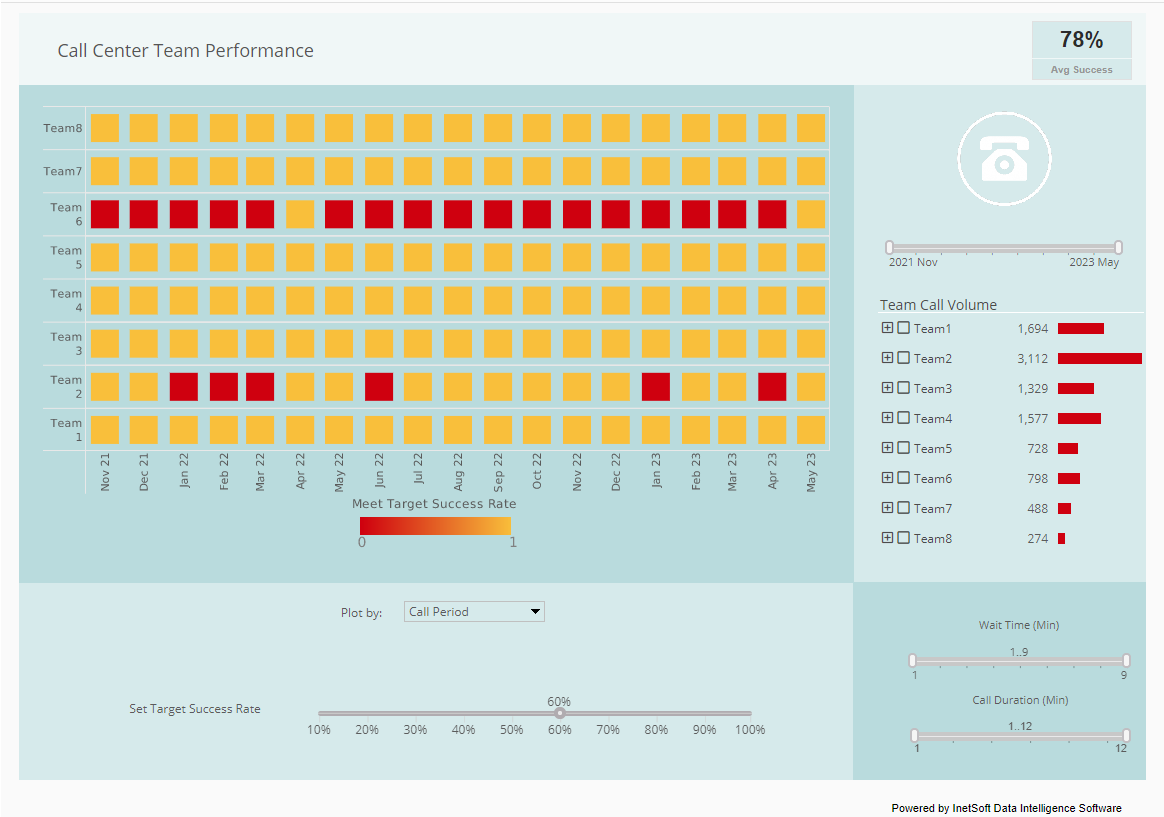Advice for a Successful MDM Project
This is the continuation of the transcript of a Webinar hosted by InetSoft on the topic of "Building a Business Case for Master Data Management." The speaker is Abhishek Gupta, product manager at InetSoft.
For a successful MDM project, it's important for the business side to be involved in the project in terms of setting goals and expectations. Some organizations are formally doing this collaboration through Centers of Excellence, Competency Centers and Advisory Councils, just to give a few of the names that these groups of champions and evangelists who regularly meet to review an MDM project are called.
So we find that many organizations will start with this approach and try to get kind of an organizational or political kind of body together and then look for good reference data sources around the organization where data is managed well and begin to work MDM through a few related sources before trying to expand into an enterprise initiative.
I should say that we have done some research in this area and 36%, according to one of our research studies, do have projects in place to be deployed across the enterprise, and another 44% said they started corporate projects in certain business functions or divisions but do envision rolling it out as an enterprise implementation.
 |
View a 2-minute demonstration of InetSoft's easy, agile, and robust BI software. |
MDM Saves IT Costs
So I think MDM should be about saving IT cost. I think it’s one thing that should be interesting both to IT and to business management. Lowering the total cost of ownership should be an objective of the project, not taking on hugely new licensing costs and lots of new people.
MDM is often applied to eliminating the duplication of efforts, from data gathering, managing and even reporting, to BI and other kinds of analytics. So one of the projects’ benefits should be in reducing the duplication throughout all of the BI and data warehousing information stack. A big goal should be reducing the cost of IT, not increasing the cost. Then comes improving security and the quality of information. Utilizing IT investments most effectively is the other major driver that we see in terms of making the business case for MDM.
MDM is often tied into data governance efforts which can be about documenting and setting up better governance for certainly regulatory compliance and other external data quality requirements. A good MDM project will address these issues at the top and in order to anchor the business case. It’s something vitally important. Data governance is also something that goes along with MDM. I think MDM should be the pragmatic practical exercise just in some, not pie in the sky and that kind of approach that we have seen in the past.
What are some common elements of successful MDM business cases and programs?
One that we have seen definitely is the collaboration as I mentioned between business and IT. IT has to avoid repeating past mistakes or trying to dictate or regulate what business users do because then I think past experience is what happens. They just go around IT and go back to their spreadsheets, back to making the data mess that everybody is trying to clean up. So this should be about cleaning up the information assets for the business. Therefore users should be deeply involved.
I think the second point is to build off or improve upon efforts already in place to integrate and improve the consistency of information. So MDM can improve data warehousing efforts, for example, I think particularly by reducing duplication and confusion in reporting hierarchies which can slow down the data warehouse effort in the whole BI stack. So this way, the data warehouse is not devoting cycles to activities that are unnecessary or out-of-date in terms of reporting.
In terms of operational systems, including ERP systems, many of these are now having to manage their own sets of metadata and master data. And so I think there, a centralized MDM system or methodology could offload some of these tasks so that the ERP systems could be focused on what they really do best, which is more about business processes and other application tasks.
MDM can also support many of the information management needs of emerging service oriented architectures, as well. So I think for organizations that are moving to SOA, they should definitely be looking at MDM as a way to handle the information architecture.
My third point that I think you see commonly in successful implementations is that companies that have experienced mergers and acquisitions, or have that as part of their business plan to grow through acquisition, face really tough challenges in terms of data quality and duplication and inconsistency. So I think some of the customers I have talked to and case studies I have seen that I think are really dazzling are the ones that really are about that situation where a company’s bought another company and have to very quickly begin to pull the assets together and consolidate.
| Previous: Building a Business Case for Master Data Management |
Next: MDM's Very Clear Mission
|
